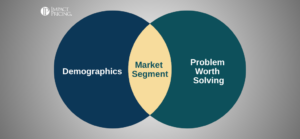You can listen to the full audio version of this blog we call — Blogcast.
Two weeks ago, I published a blog titled “Defining Value.” Many of you shared your opinions in the comments, and I appreciated each one. However, one thread of comments surprised me a little, so this blog is a deeper dive into that one concept, the meaning of Value-based Pricing (VBP). I want to hear your thoughts.
Value is ambiguous in my mind, but VBP isn’t. Let me explain my thinking, and then feel free to agree or disagree. I define Value-based Pricing (VBP) as “Charge what your customers are willing to pay.” That’s it.
Charging what a customer is WTP (Willing to Pay) is the profit-maximizing price. If a customer is WTP $100 for an object and you charge $99, you leave $1 of profit on the table. If you charge $101, you lose the sale. You can’t make more profit on that buyer than charging $100. Of course, that assumes you know their WTP, which you don’t.
Several people said WTP isn’t an actionable metric. I agree. It’s impossible to read a buyer’s mind and know exactly what he or she would be WTP. However, we do pricing studies to try to estimate WTP. We do market segmentation studies to find buyers with higher WTP so we can charge them more. Charging what a customer is WTP is impossible to achieve perfectly, but it is the goal of VBP.
Someone brought up consumer surplus. Consumer surplus is the “value” a customer receives minus the price they pay. For example, breathing air has a huge consumer surplus. You would pay a lot, but you don’t pay anything. More realistically, if you value a product at $1,000 but are able to buy it for $750, you get $250 of consumer surplus. In my mind, consumers build their own surplus into their WTP. You might value a product at $200 but are only WTP $150. You won’t buy unless you get at least $50 in consumer surplus. Pricing people should be focused on getting the $150 if possible.
Another comment talked about customer delight. If we charge a price lower than their WTP, they will be delighted and more likely to purchase repeatedly or more likely to generate new business through positive word of mouth. This is a great argument. If we can quantify the lifetime value of a customer or the strategic value of positive word of mouth, we can decide if it’s worth sacrificing immediate profit for those future sales. However, it still starts with knowing WTP and then reducing price from that point.
Finally, it seems many people think VBP means calculating the value a buyer would receive from our product and charging a fair portion of that. Although I agree with the sentiment, this is less actionable than WTP. What percent of the value should you get? How does it change with competitive alternatives?
What I LOVE about using WTP as the goal of VBP is that it considers all of the above comments. Value changes based on the weather or the buyer’s mood. WTP changes along with them, so we would think about dynamic pricing. Value changes based on the prices of competitive alternatives. WTP also changes based on the prices of the alternatives. Value changes based on the use case. WTP is different for each use-case, and we try to capture that by pricing based on market segments.
To summarize, I believe “charge what a customer is WTP” is a great definition of VBP. Yes, it’s impossible to do perfectly, but VBP is really an attitude or a goal. How can we capture more of what a buyer is WTP?
I can’t wait to hear your thoughts. Share your comments on the LinkedIn post.
Now, go make an impact!
 Tags: pricing, pricing foundations, pricing skills, pricing value, value-based pricing
Tags: pricing, pricing foundations, pricing skills, pricing value, value-based pricing













